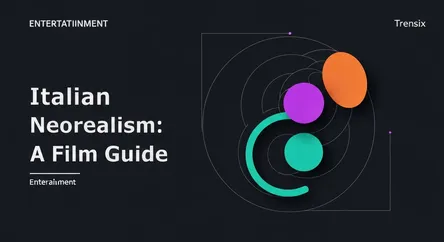Entertainment
Italian Neorealism: A Film Guide

Discover Italian Neorealism, the post-WWII film movement that changed cinema with its raw, authentic portrayal of everyday life in Italy.
What is it?
Italian Neorealism was a national film movement that emerged in Italy after World War II, lasting roughly from 1945 to 1952. Characterized by stories set amongst the poor and working class, filmmakers sought to portray the harsh realities of post-war life. Key features included filming on location in bombed-out cities and rural areas, and the frequent use of non-professional actors to enhance authenticity. Directors like Roberto Rossellini, Vittorio De Sica, and Luchino Visconti created seminal works such as Rome, Open City (1945) and Bicycle Thieves (1948), which focused on themes of poverty, desperation, and moral ambiguity in the struggle for survival.
Why is it trending?
While a historical movement, Italian Neorealism remains a vital touchstone in film studies and inspires contemporary directors. Its commitment to social realism and unvarnished truth resonates in an era where audiences crave authentic storytelling over polished blockbusters. The movement's focus on systemic poverty and human resilience feels particularly relevant today, sparking renewed interest among cinephiles and creators. Its influence is seen in modern independent films and global cinema that prioritize character-driven narratives and explore pressing social issues with a raw, documentary-like style.
How does it affect people?
Italian Neorealism fundamentally changed how audiences and filmmakers perceived cinema's purpose. For viewers, it offered a powerful, empathetic window into the struggles of ordinary people, fostering a deeper understanding of the human condition without glamour or escapism. For filmmakers, it demonstrated that compelling stories could be told with modest budgets, shifting the focus from studio artifice to real-world observation. Its legacy is profound, inspiring subsequent movements like the French New Wave and countless independent directors worldwide to use film as a tool for social commentary and reflection, proving that cinema can be both art and a powerful agent for social consciousness.